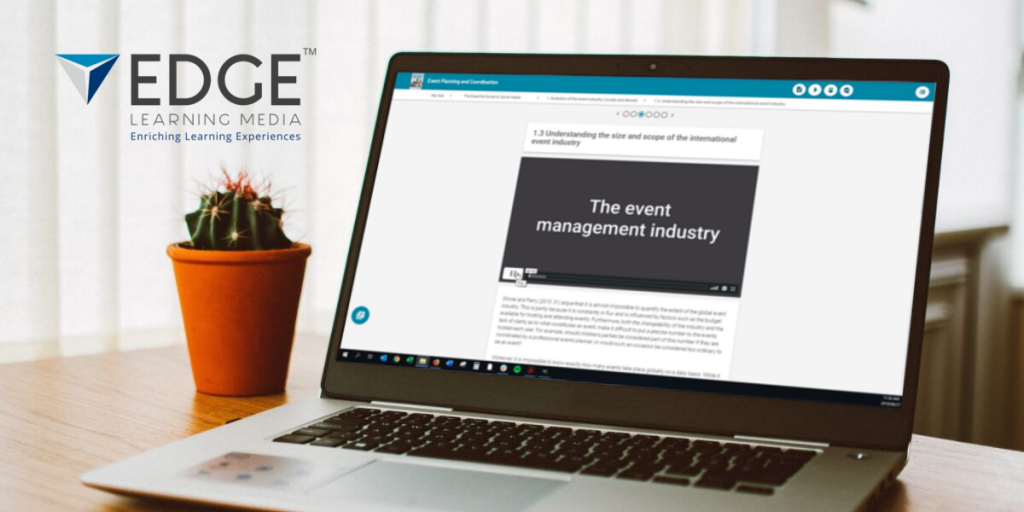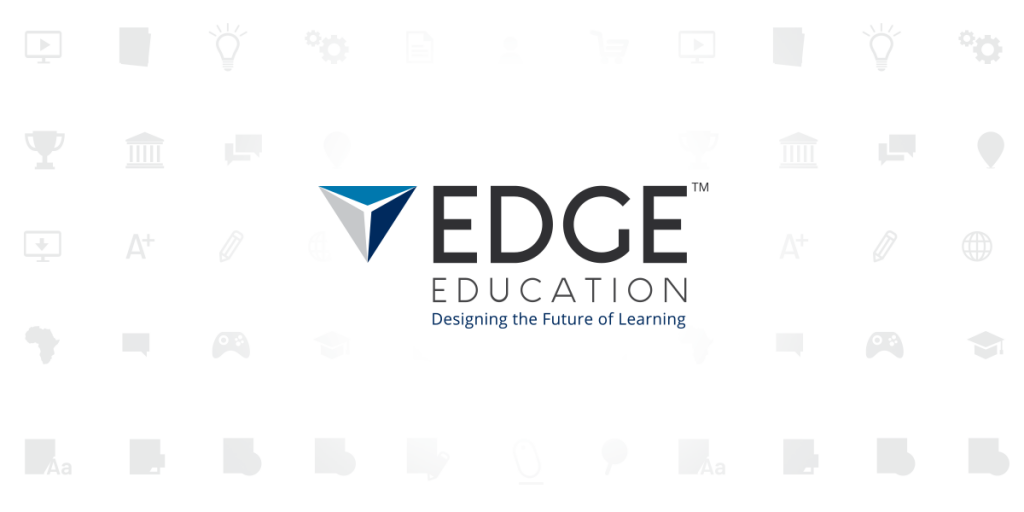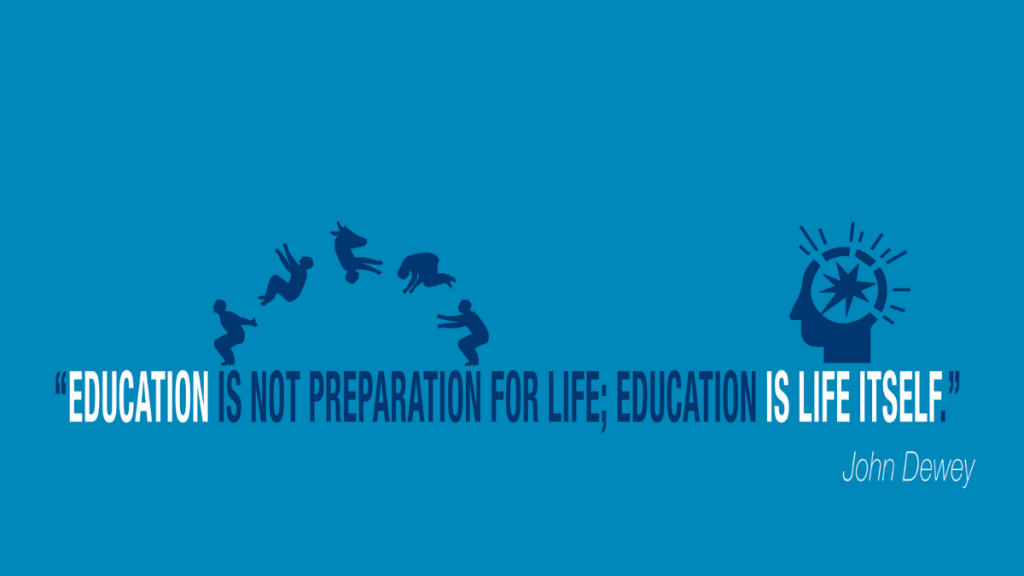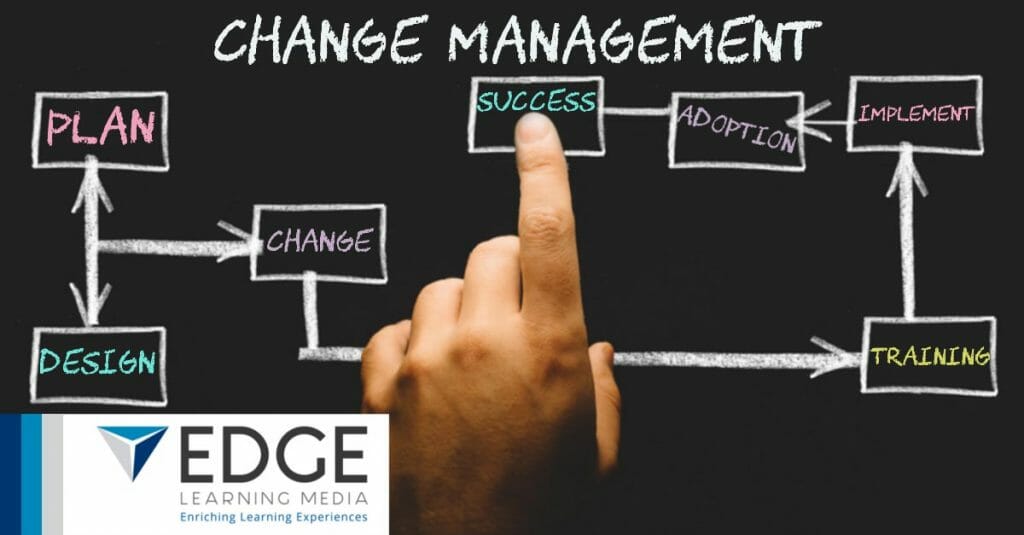Custom Content Solutions

Here’s a prediction: As we progress deeper into the 21st century, the traditional dance between academic publisher and educational institution will be disrupted. In a shift accelerated by the Covid-19 pandemic, institutions are beginning to take greater cognisance of the value of academic content, and affordances of digitisation are empowering educational institutions to take greater […]
Engaging with purpose: Game-based learning

Recent trends reveal that games are becoming increasingly important to younger generations (Saxena and Mishra, 2021: 2–3). Evidence also suggests that students have a positive attitude toward using commercial games to practice higher-order ‘graduate skills’, such as problem-solving, communication and resourcefulness (Barr, 2018: 283). This general positive regard for technology provides educators with an opportunity […]
Promoting self-directed learning through EDGE Digital CourseBooks™

The 21st century has altered the way in which information is obtained and used – there is now an entire interconnected database of information available online. However, this knowledge base is underutilised, as traditional teaching methods often neglect to encourage learners to embrace information outside the pages of their traditional print textbooks (De Beer, 2019: […]
Remote working? Try remote learning. This is education in the 21st century.

Self-directed learning (SDL) has never been more important than it is today – where the onus rests firmly on the shoulders of the learner to drive their own educational progression, ultimately coming down to whether or not they want to Learn More_
Using pedagogical agents to increase engagement in eLearning

Many eLearning practitioners would agree that a successful digital learning experience relies on student engagement. However, facilitating engagement online can be challenging – particularly when it comes to sustaining students’ attention over time, in the absence of traditional face-to-face interaction. Fortunately, recommendations arising from numerous research studies have highlighted ways to address this issue. One […]
Using Graphics in Education – Infographic

In the Digital Age, we’re constantly receiving information in multiple forms – and the same is true for the educational space. As such, it’s vital to understand how the use of media, such as visuals, impacts the learning process. Well-designed educational graphics can increase engagement, foster understanding, and improve the learning experience. This infographic contains […]
Three assumptions that may hamper online learner engagement

The use of online learning materials has many cited benefits in diverse pedagogical contexts (Appana, 2008). However, when designing online courses and materials, educators tend to hold certain presuppositions about learners’ attitudes and capabilities. This article considers three common assumptions and suggests methods for addressing the associated pitfalls. Assumption #1 – I have the […]
Matching Moodle affordances with different knowledge types

The field of eLearning undeniably offers a wide range of affordances – i.e. options that are made available to eLearning practitioners. When used effectively, these resources provide great value in ensuring that learning objectives are achieved successfully. One approach to optimising the online learning experience is to ensure that specific knowledge types are aligned with […]
The science behind great eLearning videos

When it comes to eLearning courses, video is undeniably one of the most popular mediums of instruction. It is a valuable tool for creating a diverse range of content, compiling micro lessons, and illustrating knowledge in a fun and engaging way. Recent advances in technology, software and applications have provided video designers with endless avenues […]
Emotional design in eLearning

When it comes to pedagogical theory, the relationship between emotion and learning is often neglected – or, at the very least, underestimated. However, with an increasing shift toward using eLearning resources in education, it may be useful to revisit this relationship and, in particular, to consider the role of emotions in the eLearning context. For […]
Five UX design principles to consider in eLearning

User experience design, or UX design, is a key concept for businesses wishing to ensure that their products are accessible and usable. The field of UX design aims to achieve positive user experiences by implementing certain guiding principles. These include an interest in user research, design and product use. However, it can be challenging to […]
Multimedia, learning and multimedia learning

Multimedia and learning ‘People can learn more deeply from words and pictures than from words alone.’ This statement by Mayer [a] (2014) is the multimedia learning hypothesis, which encapsulates the importance of using multimedia in learning. Mayer defines multimedia as information that is presented in both words and pictures. These words include printed and spoken […]
Principles of Multimedia Learning Part 3: Managing Essential Processing

In multimedia learning, cognitive overload is the direct result of the learner being given too much information to process simultaneously. However, cognitive overload can be prevented by effectively managing the essential processing demands on the learner. In this infographic, we define essential processing and identify three principles of multimedia learning that can assist in managing […]
Principles of Multimedia Learning Part 2: Fostering Generative Processing

One of the key goals of the cognitive theory of multimedia learning is to foster generative processing. It is this form of processing that allows a student to make sense of the information they have consumed from their learning material. In this infographic, we will define generative processing and identify four principles of multimedia learning […]
Principles of Multimedia Learning Part 1: Reducing Extraneous Processing

When extraneous processing occurs in online learning, it can result in cognitive overload and severely hamper the effectiveness of multimedia learning. However, this type of processing can be reduced through effective instructional design techniques. In this infographic, we will define extraneous processing and identify five instructional design techniques that will help reduce it. Click […]
How to write for attention

In today’s fast-paced world, people prefer to consume bite-sized portions of information. As such, short-message platforms such as Snapchat, Tumblr, Instagram and Twitter have grown in popularity (MakeAWebsiteHub.com, 2018), displaying this propensity toward quick and easy communication. In fact, Facebook recommends that in order to create engaging videos for mobile platforms, one should limit them […]
Five ways to design elearning materials for millennials

The millennial* generation is shaping the world around us – breaking the moulds that have traditionally determined how one works, socialises and learns. But what exactly is a millennial? How do they compare to previous generations? And how should you be designing your e-learning course to suit the needs of a millennial learner? Characteristics of […]
Essential Tips to Create Just-in-Time Online Training Material

Just-in-time learning behaviour has transformed how corporate entities are training their staff. This has created a need to modify training material, specifically for the purpose of just-in-time training. This approach can cut unnecessary costs, save valuable working hours, and improve the effectiveness of the training overall. Here are five tips for creating just-in-time training material:
5 Tips for Effective eLearning Videos

Video lectures and tutorials have gained popularity over the last decade, and most online courses will use a form of video instruction. Since videos are a vital tool in a course creator’s arsenal, it is essential to consider every design aspect. Poorly designed videos can decrease engagement and hinder learning. Here are five tips […]
Gamification: The what, the why and the how

The term ‘gamification’ has gained increasing popularity over recent years, and seems to be popping up everywhere. It appears to be the latest trend in corporate training and e-learning courses, with Fortune 500 companies such as Nike applying its novel approach to learning design. But what does gamification entail, and how is this model applied? […]
Five ways to implement Gamification in online courses

The term ‘gamification’ refers to the inclusion of game-based elements into a specifically non-game context. It is the latest trend in corporate training and eLearning courses, due to its numerous benefits. Here are 5 simple design tips to implement gamification in an online course:
The role of motivation in online corporate training

Participant motivation is the keystone of any online course. Without it, even the best training efforts will be for naught. If participants are not motivated to learn then they will not engage with the content or persevere with their studies. To put it simply: if you cannot find a way to motivate employees, they won’t […]
Digitisation: Meeting the eLearning needs of the new generation

Digital, digital, digital. Everything we do these days tends to take place on a digital or online platform. This has led to an increasing number of publishers digitising textbooks, to meet the needs of the modern learner. But are we digitising content in the right way? Both the production and sales of electronic textbooks are […]
Predictions for education and elearning in 2018

The year 2017 has been a great success for the e-learning industry. Looking back, we have seen advances in trends like gamification, blended learning, the rise of Experience API (xAPI), and numerous other developments. Being on the verge of 2018, one can only guess what the next year will have in store for the e-learning […]
